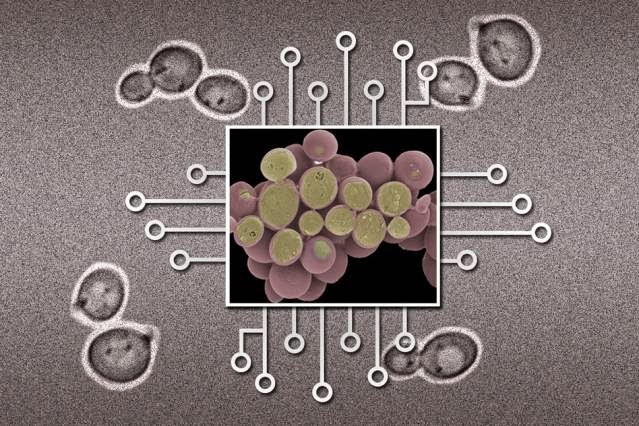 |
| Illustration: Christine Daniloff/MIT (yeast cell images from National Institutes of Health) |
Researchers have made great progress in recent years in the design and creation of biological circuits — systems that, like electronic circuits, can take a number of different inputs and deliver a particular kind of output. But while individual components of such biological circuits can have precise and predictable responses, those outcomes become less predictable as more such elements are combined.
A team of researchers at MIT has now come up with a way of greatly reducing that unpredictability, introducing a device that could ultimately allow such circuits to behave nearly as predictably as their electronic counterparts. The findings are published this week in the journal Nature Biotechnology, in a paper by associate professor of mechanical engineering Domitilla Del Vecchio and professor of biological engineering Ron Weiss.
The lead author of the paper is Deepak Mishra, an MIT graduate student in biological engineering. Other authors include recent master’s students Phillip Rivera in mechanical engineering and Allen Lin in electrical engineering and computer science.
MIT News: New device could make large biological circuits practical,
David L. Chandler
#P4TC: Bio-Computer
Comments